Land Use & Community
Source: High Performance Buildings Database
The Aldo Leopold Foundation viewed the construction of the Legacy Center as an opportunity to continue a 70-year tradition of land stewardship. While the Leopold Shack became a metaphor for living lightly on the land, it is the land itself and the Leopold family’s efforts to restore it that truly informed and inspired Leopold’s observations and writing.
The Legacy Center was built on a previously disturbed site that reinforces the historic connection to the Shack and marks the location of Leopold’s death. The rural setting is essential to the Foundation’s mission, which is to engage people in the process of ethical land management.
Education and community outreach was a central theme of the project: the Foundation held field days during the winter tree harvest, volunteers stripped bark from logs, local craftspeople designed furniture and building details, a local sawmill operator worked on the site, and the Foundation sponsored renewable energy workshops and building tours throughout construction. In its first year of operation, the Legacy Center hosted more than 5,500 visitors.
Most visitors arrive in groups by van or carpool. The parking area was designed to accommodate average, not peak, use. Because the Foundation headquarters moved from the nearby town of Baraboo to a rural area, the project team included staff commuting in the Legacy Center’s carbon analysis. The Foundation purchased adjacent real estate to house interns and visiting researchers.
Solar Site Analysis:
In order to design the complex for best solar access for both passive heating as well as the location and placement of the photovoltaic and solar hot water heating system, a shading analysis was conducted that mapped the shadows cast by the buildings at the summer and winter solstices (June 21 and December 21), at 9AM, 12 NOON and 3PM.
As the buildings were to be located in an existing clearing, and the intention was to situate them in a U like configuration, it was necessary to ensure that the buildings on the south east and south west arms would not cast problematic shadows on the most northerly buildings.
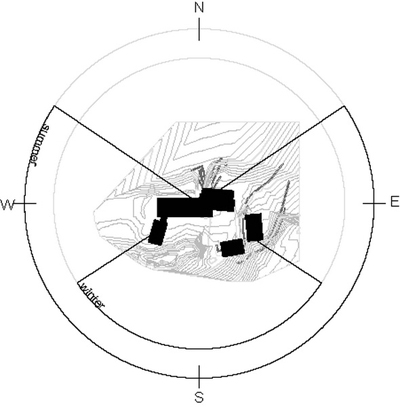
Solar Site Plan

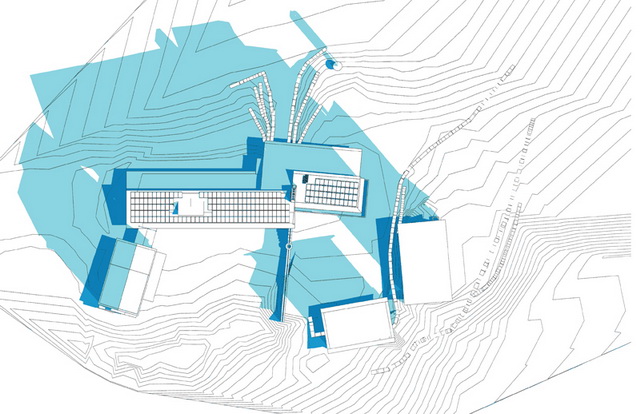
Shading Study for 9AM
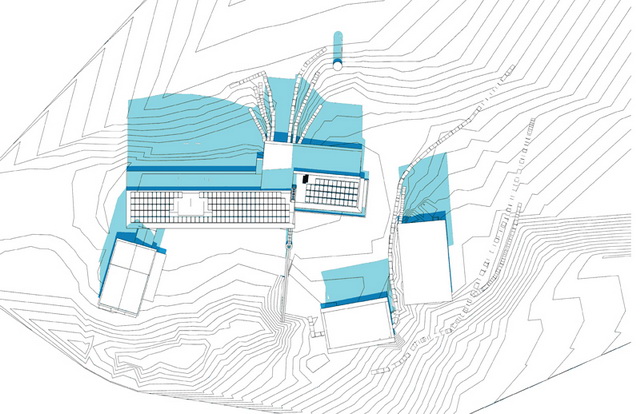
Shading Study for 12 NOON
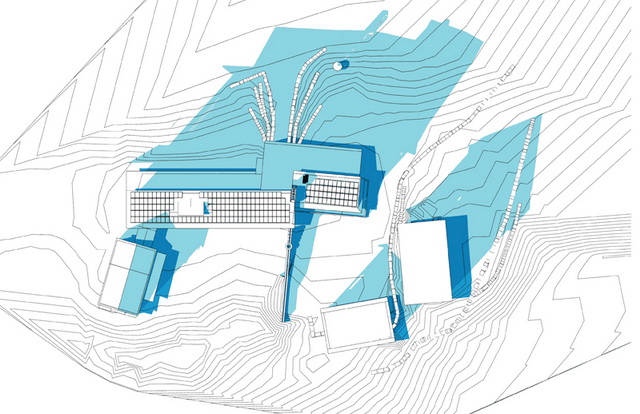
Shading Study for 3 PM
By looking at the final site plan it can be seen that the siting has taken advantage of the placement of the existing clearing and arrived at a disposition of buildings that allows for the best use of the siting to provide solar access for heating and lighting the building.
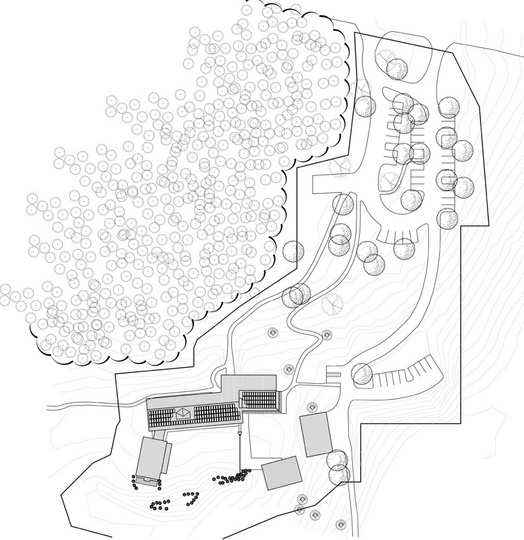
Final Site Plan

